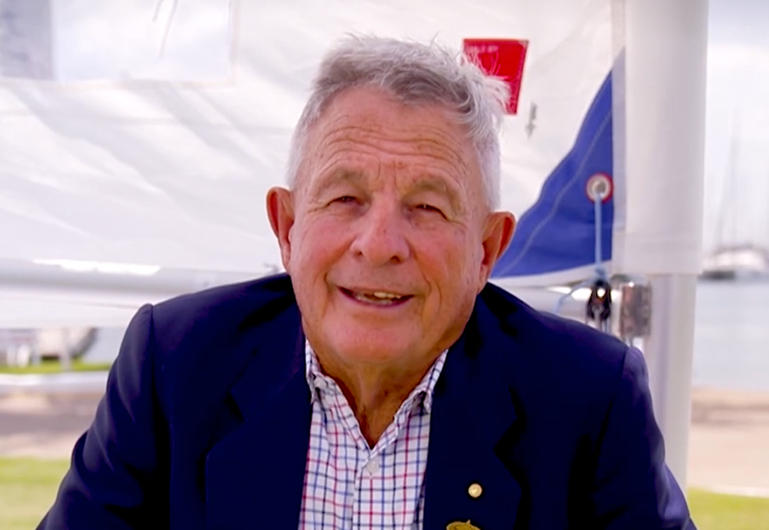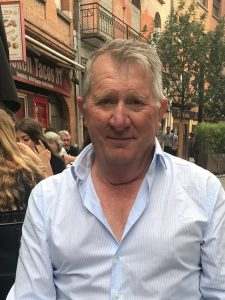Two treatment options – low dose rate brachytherapy (LDR-brachytherapy) and external beam radiation therapy – are approved to treat prostate cancer in Australia by the medical regulator, the Therapeutic Goods Administration (TGA). However, the combination treatment is not covered by Medicare for advanced prostate cancer (cancer that has begun to spread outside the prostate).
Throughout the rest of the world, LDR-brachytherapy used in combination with external beam radiation therapy is considered the standard of care to treat prostate cancer.
However in Australia, the combination therapy is not available on Medicare for those diagnosed with advanced prostate cancer. This means Australia is lagging behind the rest of the world in access to prostate cancer treatment and Aussie men are missing out.
74-year-old Brisbane resident Ken Hurling, OAM was among the first 100 Queensland men to receive brachytherapy for prostate cancer almost 15 years ago and can’t believe the combination therapy still isn’t available on Medicare.

At the time of his diagnosis, Ken was unaware anything was wrong as he believed he was fit and healthy.
“I was in shock when I was first diagnosed as nothing felt wrong. I had no symptoms at all. I just couldn’t believe that I had something that could kill me, and I was so unaware of it,” said Ken.
Ken’s GP referred him to urologist Dr Wood, who talked Ken through all his treatment options including LDR-brachytherapy.
“I discussed a few different treatment options with my doctor, including active surveillance of the cancer and hormone therapy, but I wasn’t comfortable with any of the options. That was when I was first told about LDR-brachytherapy, and I knew it was right option for me,” Ken said.
Low dose-rate brachytherapy (LDR-brachytherapy) for prostate cancer is a minimally invasive, targeted treatment option which helps to reduce the risk of damage to surrounding healthy cells. It involves the insertion of permanent radioactive ‘seeds’ directly into the prostate, which give off localised radiation over several months to kill cancer cells.
“I feel like one of the lucky ones as I was able to access the treatment. I know other blokes aren’t as fortunate.
“It is really important men have access to different treatment options for their prostate cancer. What’s right for one guy might not necessarily be right for another,” said Ken.
According to Dr Joseph Bucci, Radiation Oncologist at St George Public and Private Hospitals, Sydney, Australian clinicians want to be able to offer this treatment option to their patients.
“In 2017, a landmark clinical trial investigated LDR-brachytherapy and external beam radiation therapy in men with locally advanced prostate cancer. The results revealed the largest tumour control, or ‘cure rates’ ever seen in radiotherapy.
“Within 24 months of the data being published, medical organisations around the world updated their clinical guidelines to broaden access to this treatment, making it the standard of care across the USA, UK, Canada and throughout Europe. Yet four years on and Australian men still can’t access it on Medicare,” said Dr Bucci.
“As clinicians, we want to offer our patients all available prostate cancer treatment options approved by Australia’s regulatory body and implemented globally as a standard of care.”
Stephen “Basil” Lalor, 75, from Tasmania, thanks his bad eye and ‘dodgy heart’ for forcing him out of surgery and into innovative therapy for his prostate cancer in 2018.

Stephen was originally booked for surgical removal of his prostate twice, but Stephen’s surgery was delayed initially due to his glaucoma (eye disease), and later due to atrial fibrillation (irregular heartbeat).
“At this point I asked my specialist what my other options were, as surgery didn’t seem like it was a good fit for me. That’s when we discussed the combination radiation therapy,” said Stephen.
After discussing treatment options with his specialist, Stephen opted for the combination of low dose-rate brachytherapy and external beam radiation therapy.
Within three-months of treatment, Stephen was symptom-free, and four years on he is now disease-free, with no evidence of prostate cancer detected.
“The brachytherapy was day surgery, and I was back to my normal activities within a few days. It took about three months since treatment for everything to settle down, by which stage all of the symptoms completely disappeared,” Stephen said.
“My treatment was covered by Medicare, and it didn’t even occur to me that it might not be the case for other men living with advanced prostate cancer.”
Every Australian man deserves the right to choose from all available prostate cancer treatment options approved by the TGA and implemented globally as a standard of care.
For more information and to learn how you can back access to brachytherapy for Australian men, visit www.backingbrachy.com.au
